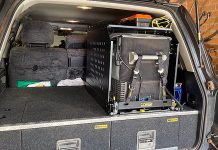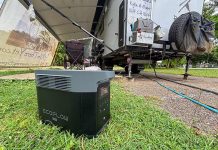Fuel. Along with accommodation/site costs, it’ll be one of your biggest expenses when caravanning, if not the biggest. But I don’t need to tell you that – no doubt your bank account has told you multiple times over.
Ultimately, anything you can do to bring that cost down – even just a little – means more money to spend on making memories. It’s often said that travelling slower on the open highway is one way to beat the bowser. But is that really true? And if so, how much might you expect to save? That’s what I set out to discover when I hitched a new Goldstream RV 1860 RE weighing 2359kg Tare to my 2018 manual MU-X. Could I make significant savings simply by easing off the accelerator?
A QUICK DISCLAIMER
Before I go any further, it’s important to make a few points. First, whether or not you might save a few bucks at the bowser should be a distant second or third consideration compared to the safety of you, your passengers and other motorists. Consistently driving 20km/h below the speed limit, regardless of the traffic banking up behind you, is not necessarily safe or conducive to happy motoring.
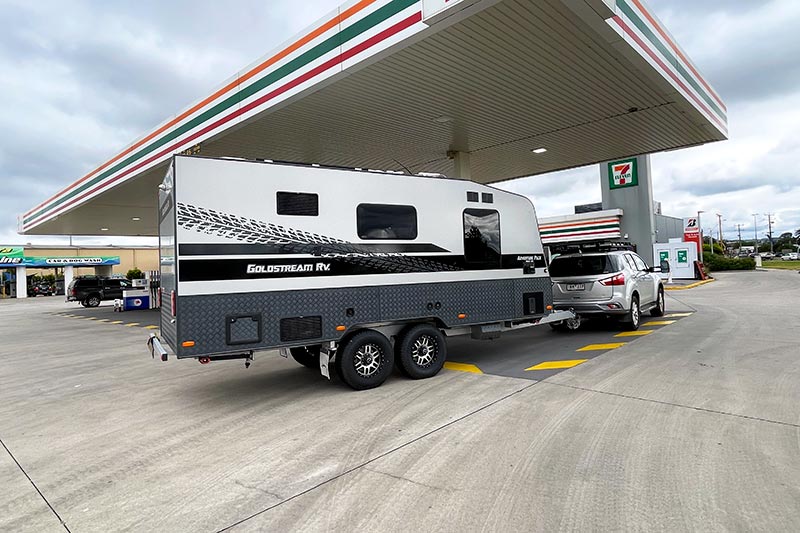
The best advice: always drive to the prevailing conditions, from traffic to weather, within your own limitations, and safely and legally. GoRV does not condone single-mindedly towing below the posted limit in the name of saving money. However, there may be times when conditions are conducive to easing off the throttle in order to ease up on your wallet.
THE FUEL EFFICIENCY TEST
Here’s how I went about testing the belief that travelling slower leads to fuel savings. First, I filled up my tow vehicle with diesel at a servo in Pakenham, Vic, near Goldstream RV’s manufacturing HQ. Then, I zeroed the tripmeter and drove along Melbourne’s interminable Monash Freeway, through the Domain Tunnel, over the West Gate Bridge. From there, I turned around and retraced my steps back to Pakenham.
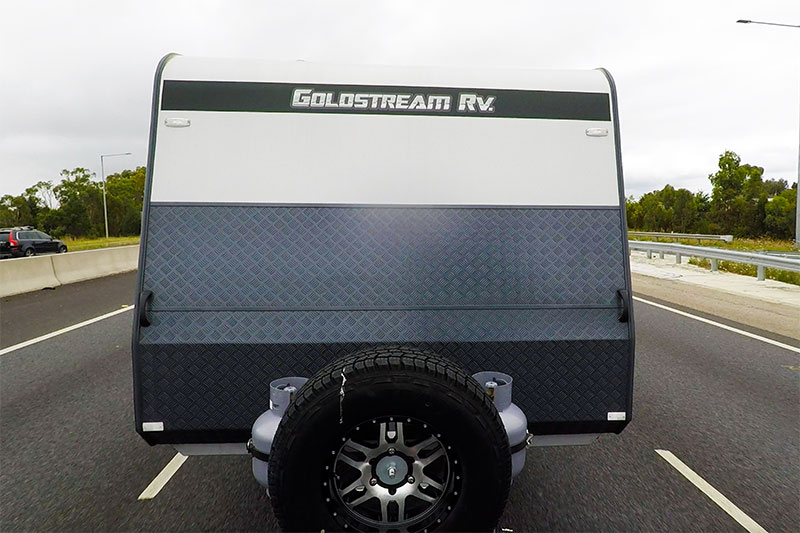
At all times, I stuck to the posted speed limit. For the vast majority of the trip, that was 100km/h. Being the middle of the day, traffic was light, so I was able to drive in a fairly consistent manner. Fortunately, the weather conditions allowed me to drive at 100km/h, and the van felt solid as a rock – there was no twitching that may have tempted me to slow down.
Back at the same servo, I topped up my tank with diesel. According to the trip-meter, I travelled 139.8km, while the bowser said I’d used 22.25L. A quick calculation revealed this to be an average of 15.91L/100km. Not bad, but not great either.
With the tank once again filled to the very brim, I travelled the same route, this time with 80km/h as my top speed. Again, because the traffic was quite light, I didn’t hold anyone up, nor cause any safety issues – I was very mindful.
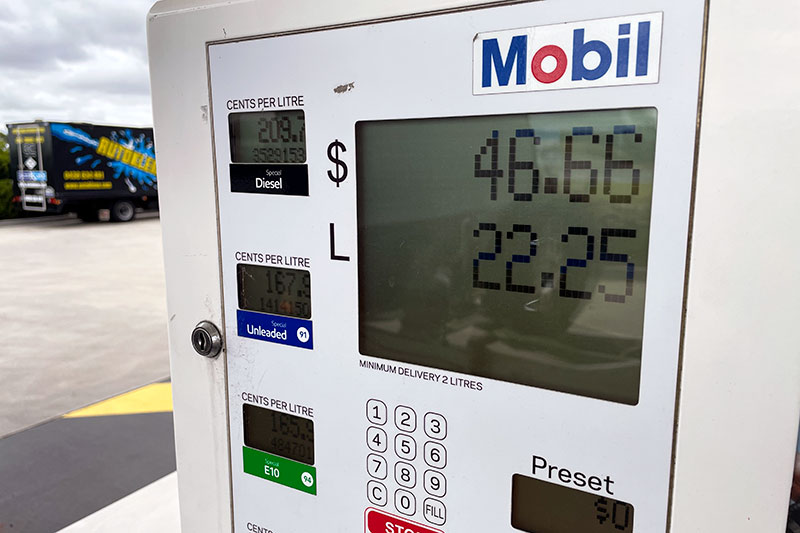
But here’s the thing. Fuel comparisons such as this are imperfect. Any number of variables will have a bearing on the result, whether it’s changing speed zones (and there were a few), to differences in the amount of stopping and starting. The one variable within my control was the speed at which I travelled, and for the vast majority, it was 100km/h for the first run, and 80km/h for the second.
FINAL RESULT
Upon returning to the Pakenham servo, I once again topped up the tank… and was gobsmacked by the difference in fuel consumption. The tripmeter claimed I had somehow travelled about 200m less during the second run, but I don’t view that as statistically significant in this case.
As it turned out, the MU-X consumed 15.49L for an average of 11.1L/100km. Frankly, I was not expecting such a difference in fuel economy, but the numbers don’t lie. Travelling at predominantly 80km/h, compared to 100km/h, saved 4.81L of diesel.
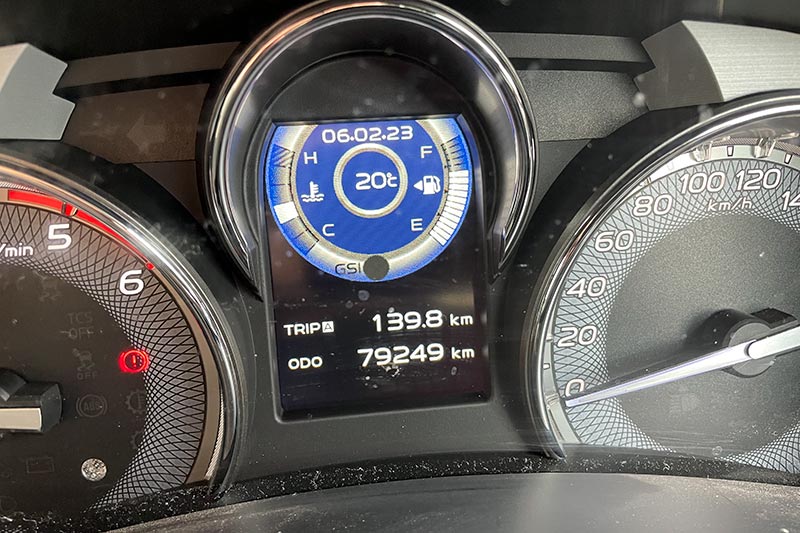
At the time of my test, diesel was priced at $2.097 – a saving of $10.09. Extrapolating that over 1000km, the saving would be over $100.
But all of this is perfect-world stuff. It’s unlikely you’ll ever be in a position where you can safely travel at 80km/h for hundreds of kilometres on end, and if you’re in a position where you need to pinch every penny to reach a certain far-flung destination, it may be better to rethink your holiday spot.
Nonetheless, it’s proof of what we have all been told or experienced for ourselves to one degree or another: knocking off a bit of speed will improve fuel efficiency and save you money.
RESULTS AT A GLANCE
First Run
- Top speed: 100km/h
- Distance travelled: 139.8km
- Fuel consumption: 15.91L/100km
Second Run
- Top speed: 80km/h
- Distance travelled: 139.6km
- Fuel consumption: 11.1L
OTHER WAYS TO IMPROVE FUEL EFFICIENCY
It’s not all about watching the throttle when it comes to giving a metaphorical middle finger to Big Diesel. There are plenty of simple, practical things that you can do to maximise your tow vehicle’s fuel efficiency…
- Ensure all tyres are inflated to the correct pressures for your rig. One approach is to first check your tyre pressures when the tyres are cold. Then, after some towing has gotten them to operating temperature, re-check the pressures. For passenger/highway tyres, you’re typically looking for a 4psi increase. For light truck tyres, you’re looking for an increase of 6psi.
2. Drive sensibly. It sounds like a money-saving tip provided by a current affairs program, but accelerating gently and driving defensively will increase your fuel consumption. So… deep breaths before you climb behind the wheel, or let your more relaxed partner take the helm.
3. Consider a wind deflector. Yes, they do work. We know this from our own testing of both the Aero Plus and of the Stealth deflectors, the two main wind deflectors on the market in Australia for caravanners.
4. If possible, avoid travelling into headwinds or in particularly bad weather. Not always possible, true, but when it comes to saving fuel, the weather can be either friend or foe.
5. Is there a route to your destination that doesn’t involve lots of inclines? Hauling a heavy van up hill after hill is a pretty good way to burn through fuel.
6. Consider your payload. Weight is the enemy when it comes to fuel consumption. Having said that, don’t do without the things that bring you enjoyment when you’re on the road. After all, what’s the point if you’re not having fun?
7. Finally, consider download an app that shows in real time the various fuel prices at the servos along your route. It should go without saying that it may not be worth driving miles out of your way just to save a few cents per litre, but you may be able to save a few bucks. Fuel Charge is one app that comes highly recommended.



